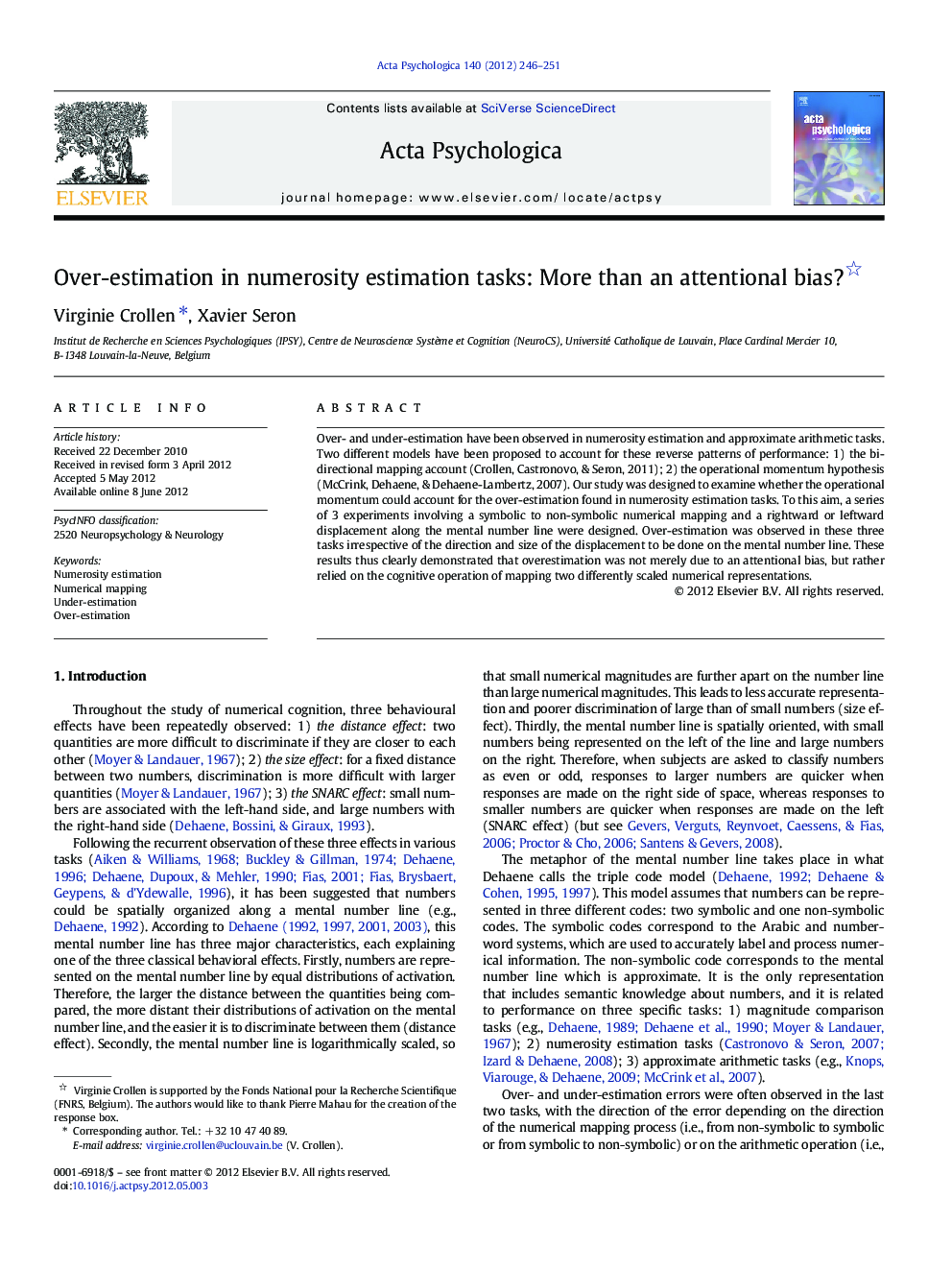| Article ID | Journal | Published Year | Pages | File Type |
|---|---|---|---|---|
| 919924 | Acta Psychologica | 2012 | 6 Pages |
Over- and under-estimation have been observed in numerosity estimation and approximate arithmetic tasks. Two different models have been proposed to account for these reverse patterns of performance: 1) the bi-directional mapping account (Crollen, Castronovo, & Seron, 2011); 2) the operational momentum hypothesis (McCrink, Dehaene, & Dehaene-Lambertz, 2007). Our study was designed to examine whether the operational momentum could account for the over-estimation found in numerosity estimation tasks. To this aim, a series of 3 experiments involving a symbolic to non-symbolic numerical mapping and a rightward or leftward displacement along the mental number line were designed. Over-estimation was observed in these three tasks irrespective of the direction and size of the displacement to be done on the mental number line. These results thus clearly demonstrated that overestimation was not merely due to an attentional bias, but rather relied on the cognitive operation of mapping two differently scaled numerical representations.
► We investigate the over-estimation found in numerosity production tasks. ► We contrast the bi-directional mapping and the operational momentum hypotheses. ► Overestimation is not due to a mere attentional process.
